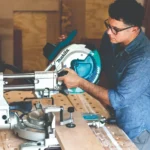Painting is a fun and rewarding activity that can transform any space with a touch of color and creativity. However, painting can also be challenging and frustrating if you don’t know the basics of how to use a brush properly. One of the most common questions that beginners ask is: do you paint up or down with brush? The answer is not as simple as you might think, as it depends on several factors such as the type of paint, the type of brush, the surface you are painting, and the effect you want to achieve. In this article, we will explain the pros and cons of painting up or down with brush, and give you some tips and tricks to improve your painting skills.
The correct answer to the question of whether you should paint up or down with brush is: it depends. There is no one-size-fits-all rule that applies to every painting situation, as different techniques may work better for different scenarios. However, there are some general guidelines that you can follow to make the best decision for your painting project.
Painting Up or Down With Brush: Pros and Cons
Painting up or down with brush has its own advantages and disadvantages, depending on the type of paint, the type of brush, the surface you are painting, and the effect you want to achieve. Here are some of the pros and cons of each technique:
Painting Up With Brush
Painting up with brush means starting from the bottom of the surface and moving the brush upwards in a vertical motion. This technique is usually recommended for:
- Oil-based paints, as they tend to drip less than water-based paints, and painting up can help prevent drips from ruining the lower part of the surface.
- Flat or angled brushes, as they can hold more paint and create a smoother finish than round or oval brushes, and painting up can help distribute the paint evenly and avoid brush marks.
- Smooth and flat surfaces, such as walls, doors, and cabinets, as they can be painted more easily and quickly with a vertical motion, and painting up can help cover any imperfections or holes in the surface.
- A solid and uniform color, as painting up can help create a consistent and even coat of paint, and avoid any streaks or patches of different shades.
Some of the disadvantages of painting up with brush are:
- It can be tiring and uncomfortable, as you have to lift your arm and shoulder constantly, and you may need a ladder or a stool to reach the higher parts of the surface.
- It can be messy and wasteful, as you may have to reload your brush more often, and you may spill or splatter some paint on the floor or the surrounding areas.
- It can be difficult and risky, as you have to paint against gravity, and you may lose control of the brush or the paint, and end up with drips, runs, or sags on the surface.
Painting Down With Brush
Painting down with brush means starting from the top of the surface and moving the brush downwards in a vertical motion. This technique is usually recommended for:
- Water-based paints, as they tend to drip more than oil-based paints, and painting down can help control the drips and direct them towards the lower part of the surface.
- Round or oval brushes, as they can create more texture and detail than flat or angled brushes, and painting down can help accentuate the brush strokes and add some character to the surface.
- Rough and textured surfaces, such as wood, brick, or stone, as they can be painted more effectively and accurately with a vertical motion, and painting down can help fill in the cracks and crevices in the surface.
- A gradient or a pattern, as painting down can help create a smooth and natural transition of colors, and allow you to blend or contrast different shades or designs on the surface.
Some of the disadvantages of painting down with brush are:
- It can be boring and monotonous, as you have to repeat the same motion over and over again, and you may not see the results of your painting until you finish the lower part of the surface.
- It can be tricky and frustrating, as you have to adjust the pressure and the speed of the brush, and you may have to deal with drips, runs, or sags on the surface.
- It can be dull and flat, as painting down can reduce the amount of paint and the coverage on the surface, and result in a thin and uneven coat of paint.
Painting Up or Down With Brush: Tips and Tricks
Regardless of whether you choose to paint up or down with brush, there are some tips and tricks that you can follow to improve your painting skills and achieve a better outcome. Here are some of them:
- Prepare the surface and the area before painting, by cleaning, sanding, priming, and masking the surface, and covering the floor and the furniture with drop cloths or plastic sheets.
- Choose the right type and size of brush for your paint and your surface, and make sure it is clean and dry before using it.
- Load your brush with the right amount of paint, by dipping it about halfway into the paint, and tapping it gently on the edge of the container to remove any excess paint.
- Hold your brush at a 45-degree angle to the surface, and apply the paint with smooth and steady strokes, following the direction of the wood grain or the shape of the surface.
- Overlap your strokes slightly, and blend the edges of each stroke while the paint is still wet, to avoid any visible lines or marks on the surface.
- Clean your brush frequently, by rinsing it with water or solvent, and wiping it with a rag or a paper towel, to prevent the paint from drying and hardening on the bristles.
- Take breaks and switch hands, to avoid fatigue and strain on your arm and shoulder, and to maintain a good posture and a steady grip on the brush.
Conclusion
Painting up or down with brush is a matter of personal preference and situational factors, as each technique has its own pros and cons, depending on the type of paint, the type of brush, the surface you are painting, and the effect you want to achieve. However, by following some general guidelines and some tips and tricks, you can make the best decision for your painting project, and enjoy the process and the results of your painting. Happy painting!



